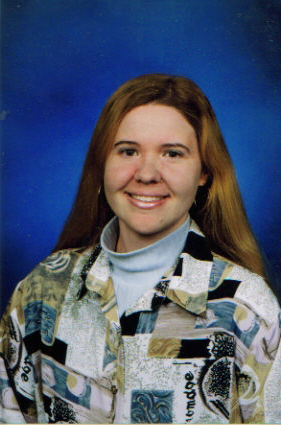Serial Fiction
In This Issue
Some books are so wonderful that we want to read them over, or even again and again. Authors sometimes capitalize on this kind of success by writing a sequel, or two, and suddenly a series has been born. Children still love the old Hardy Boys and Nancy Drew series. Pre-teens and teenagers today relish the Harry Potter and the Twilight books and films. Many adult readers are fans of the books by Alexander McCall Smith in his No. 1 Ladies Detective Agency, 44 Scotland Street and Isabel Dalhousie series. Most recently, The Millennium Trilogy by the late Swedish author Stieg Larsson has become very popular.
This issue of the Journal of the Center for Mennonite Writing focuses on this burgeoning phenomenon by focusing on fiction that has appeared in series written by Mennonite or Amish authors, or written about Mennonite and Amish people, whether by Mennonite-related or non-Mennonite authors.
A minimal definition of “series” might be a sequence of at least three books that deal with overlapping characters in the same historical and geographic setting. The narrative may or may not be continuous, although by including characters from other books their stories are at least implied. Usually books appearing in a series can be read in any order, which militates against a narrative that continues to unfold from the first through the last books.
Among the Mennonite authors who have been given the most attention in recent years at conferences and in journals, the three novels by Armin Wiebe about Low German Manitoba culture, often referred to as his “Gutental novels”—The Salvation of Yasch Siemens, Murder in Gutental, The Second Coming of Yeeat Shpanst—is the only true series that comes to mind. Rudy Wiebe’s Sweeter than All the World is a sequel to The Blue Mountains of China and Sandra Birdsell’s The Ladies of the House is a sequel to Night Travellers. However, a sequel seems to be something less than a series. And Birdsell’s books, later published as the one-volume Agassiz Stories, really constitute a long novel of stories.
This issue of the journal foregrounds other authors who have found enthusiastic audiences and distinguished themselves by writing Mennonite-related serial fiction. They are Mennonites Judy Clemens and Karl Schroeder, non-Mennonite P. L Gaus, and the many Mennonite, Amish, Old Order Mennonite, and non-Mennonite writers who supply the U.S. and Canadian mass markets for romance and detective fiction about Mennonite and Amish people—sometimes called bonnet fiction, or buggy fiction. The most successful of these writers is Beverly Lewis. My bibliography in this issue is an initial attempt to identify these series. Notice that, although it features mainly series of “bonnet fiction,” it also includes the series by Judy Clemens, P. L. Gaus, Karl Schroeder, Armin Wiebe and the earlier writer A. E. van Vogt.
Karl Schroeder’s short story “Making Ghosts” was first published in On Spec (Hard Science Fiction Issue), Spring, 1994, considerably before his “Virga” series of four science fiction novels published by TOR Books from 2006-2009. Luddites might not be able to follow all of the sophisticated cybernetics on which the story is based, but the story deals clearly enough with how the “virtual” representation--or creation, or re-creation--of a person relates to the human desire for immortality. When we die, can we live for eternity in virtual reality? There must be something about the water of the Brandon, Manitoba, community from which Karl Schroeder comes. It is the same community that produced A. E. van Vogt, regarded as one of the best writers in the “golden age” of sci fi, and, before him, Douglas Hill and E. M. Hull.
Judy Clemens offers the first chapter of her newest book,The Grim Reaper’s Dance, second in the “Grim Reaper” series, which was released on July 1, 2010, by Poisoned Pen Press, the premier U. S. publisher of detective fiction. Poison Pen has published all five of her Stella Crown mysteries and has given Judy a contract for the books in her second series, which features the paranormal detective Casey Maldonado, whose close associate is Death. No doubt this series will draw a following, too, but her fans might well complain if she abandons Stella Crown, the tough-talking, cycle-riding Mennonite sleuth featured in her first series.
About her second series, Judy says: “During 2008 and 2009 my father was very sick from cancer. Death became a regular partner of my days as I considered what was happening to my dad. When I began writing about Casey, Death came along as a natural companion. When reviews began coming out describing Embrace the Grim Reaper as a paranormal mystery, I was surprised. Death was such a real part of my life, I hadn’t thought of it as being anything supernatural. I now see that of course it is a paranormal aspect of the book! I write Death as a genderless being so people can imagine it as they will. Most people think of it as male, but I’ve had one person who seemed surprised it would be anything but female! It’s fun to hear people’s thoughts on what Death looks like to them.”
P. L Gaus was too busy writing his seventh Ohio Amish Mystery novel, all published by Ohio University Press, to contribute new fiction for this issue, but Kyle Baldanzi Schlabach offers a critical, interpretive survey of the series. Kyle is well qualified to present Gaus, since Kyle is a native son of the same area of eastern Ohio that Gaus represents in fiction, and Kyle has also taught detective fiction at Goshen College.
As my bibliography indicates, the number of “bonnet” novels published about Amish and conservative Mennonite communities is staggering. Beth Graybill contributes a critical survey of some of the authors working in the field. The essay is a revision of the paper she presented at the "Mennonite/s Writing: Beyond Borders" conference at Bluffton College in 2006. Among other things, Beth assesses the “authenticity” of the authors’ representation of Lancaster County, Pennsylvania, Amish life, which she is eminently qualified to do since she is a native of “The County” and until recently was director of the Lancaster County Mennonite Historical Society.
Michelle Thurlow focuses on the work of Beverly Lewis, who is arguably the most successful writer of Amish romance novels. In particular, Michelle gives a literary “reading” of three Lewis novels whose unity is supported by symbolic use of infants’ clothing. Michelle’s master’s degree in Christian fiction, along with her experience in teaching it, might lead us to hope that she will continue to keep up with, and publish, about this burgeoning phenomenon.
Indeed, one goal of this issue is to encourage more serious consideration of the extreme current interest, especially by non-Mennonite readers and authors, in Amish and Mennonite romance fiction. When did it begin? What historical and cultural developments have led to it and sustained it? Do the authors “get it right” in regard to Anabaptist theology, culture and experience? Why are the authors mostly non-Mennonites, or people only tangentially related to Mennonitism? What creative contributions are writers of bonnet fiction making to what readers of the CMW website regard as “Mennonite literature”?
Despite budgetary constraints, the Mennonite Historical Library at Goshen College still tries to obtain copies of every such book published, which makes it a beckoning haven for whoever will rise to the challenge of understanding this popular literature.
-- Ervin Beck
In this issue:
-
3
read more

Chasing the Bonnet
by Beth GraybillA few years ago, when conducting dissertation research on Amish women in business, I visited a gift shop and noticed a rack of romance novels with pictures of Amish women on the cover. I asked the Amish business owner, “Do you sell a lot of these?”
“Yes,” she said, “the tourists like them.”
“Do Amish buy them?”
“Well,” she said, “a lot of people read them.” Later, when I was giving an earlier version of this essay at a public conference at Elizabethtown, an Amish grandfather told me, “We would have some of these books in our homes.”
The genre …
-
0
read more

Chapter 1
by Judy Clemens“This here’s my daughter Katie. She’s thirteen, and lives for marching band. Plays the flute. You wouldn’t believe the way they work them kids. She’s in better shape than I ever been.” Evan the trucker laughed and patted his sizable gut, which almost touched the steering wheel of the semi.
Death gave out a snort, chin to chest, mouth open. The trucker’s conversation obviously wasn’t interesting enough to keep the Grim Reaper awake, and the lack of traffic on the sleepy highway gave no relief from the steady clicking of the tires on the pavement, or the view of flat …
-
0
read more

Making Ghosts
by Karl SchroederWhat stands out in memory is that first picture of Maier's idea. I am standing at her right shoulder, and she leans forward over the RISC station and taps the mouse a couple of times. The nineteen inch monitor lights up with a three-dimensional image like a mist of caged light.
"See there," says Maier. "That's a thought."
"It's pretty," I say, quite uncomprehending. "This is 24-bit colour, right?"
"Forget the screen, Graham. Look at what's in it." And she tells me what I'm seeing: a picture of her brain's synaptic activity, taken while she thought about her husband.
"We …
-
0
read more

Mennonite and Amish Serial Fiction: An Informal Bibliography
by Ervin BeckJoe Springer, curator of the Mennonite Historical Library at Goshen College, wants the library to contain all books ever published by and about Mennonites, Amish and Hutterites. He not only knows the MHL catalog, but he combs both rare book and new book catalogs and seems to remember whatever he has seen.
So when I was writing “In This Issue” as an introduction to serial fiction by and about Mennonites and Amish, I wanted to include a paragraph listing of all such authors’ names. I knew of eleven. I sent the list to him, asking him to add any others …
-
2
read more

Poetry Feature: Six Poems
by Jeff GundyWe are pleased to publish for the first time a selection of six poems by Jeff Gundy, author of the award-winning Spoken Among the Trees (University of Akron Press 2007) and four other poetry collections. In these poems the worlds of popular culture—suggested by references to Ronald Reagan, Jerry Garcia, Bob Dylan—intersect with poetic forms inspired by Rainer Maria Rilke and Georg Trakl to create a meditative collage. The homage to these Austrian poets is perhaps a nod to the fruits of Gundy’s Fulbright Lectureship at the University of Salzburg in 2008. In the final poem, "Biblipgraphical Lament," Gundy plays with the ways in which Stanley Hauerwas's glosses on John Howard Yoder inspire his own meditations.
Of these poems Gundy says: “I find myself trying to be mindful of so many things at once: the need to reckon somehow the almost unspeakable intersections, griefs and privileges of ordinary American life, to pay attention and homage to the ten thousand things of this world, to honor and to resist. At the same time, the language makes its own demands. As it is read and said, the poem should somehow give pleasure in its sounds, its shapes, its images, even as perhaps it troubles. And all this happens, of course, in the stew-pot of my particular set of history, traditions, commitments and obsessions.”
The poems are both playful and edgy—not entirely at ease in the world. Gundy nudges his readers to attend to the contradictory images they daily imbibe as members of a media culture. In this way his poems are deeply Anabaptist, searching for wholeness—although preferring honesty to false piety—in the midst of a life permeated with the profane.
-- A. H.
-
0
read more

Review Essay: P. L. Gaus’s Ohio Amish Mystery Series
by Kyle SchlabachBlood of the Prodigal (1999), Broken English (2000), Clouds Without Rain (2001), Cast a Blue Shadow (2003), A Prayer for the Night (2006), Separate from the World (2008).
-- Athens, OH: Ohio University Press.
-
0
read more

“A Whisper of Satin”: The Infant Dress Leitmotif
by Michelle ThurlowAlthough best-selling inspirational novelist Beverly Lewis is understandably credited with "g[iving] birth to" the lucrative Amish fiction genre in 1997 with the release of her inaugural adult novel The Shunning (Gorski, par. 9), Lewis was not the first author to write about horse-and-buggy Plain folk, nor was she the first to pen romance novels about them.
As Steven Nolt points out, "The dawning of the twentieth century brought the prospect of new relationships between modernity and a people [the Amish] who stood apart from its promises and goals" (257), as illustrated by the publication of a book called …